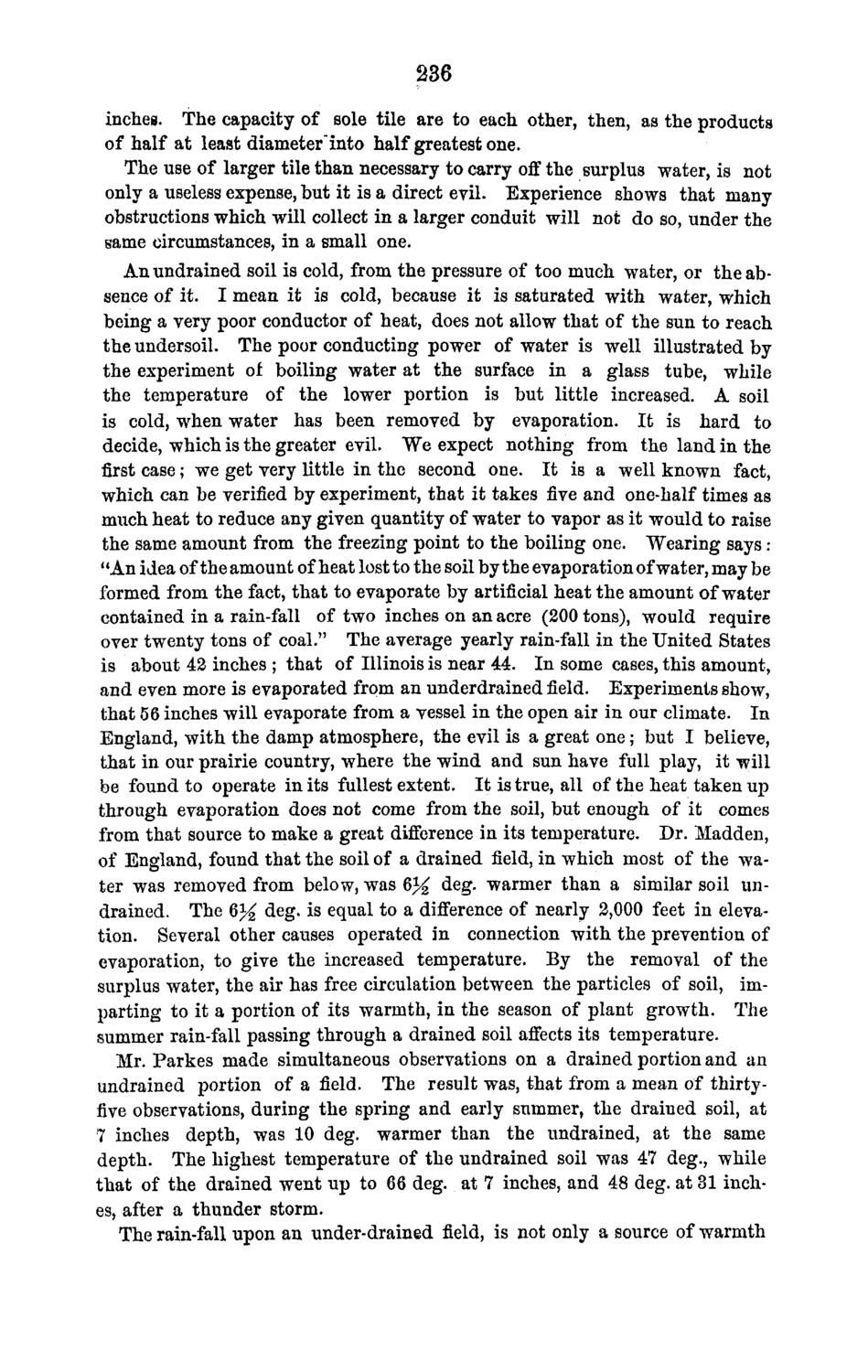| |
| |
Caption: Board of Trustees Minutes - 1870
This is a reduced-resolution page image for fast online browsing.

EXTRACTED TEXT FROM PAGE:
236 inches. The capacity of sole tile are to each other, then, as the products of half at least diameter"into half greatest one. The use of larger tile than necessary to carry off the surplus water, is not only a useless expense, but it is a direct evil. Experience shows that many obstructions which will collect in a larger conduit will not do so, under the same circumstances, in a small one. An undrained soil is cold, from the pressure of too much water, or the absence of it. I mean it is cold, because it is saturated with water, which being a very poor conductor of heat, does not allow that of the sun to reach the undersoil. The poor conducting power of water is well illustrated by the experiment of boiling water at the surface in a glass tube, while the temperature of the lower portion is but little increased. A soil is cold, when water has been removed by evaporation. It is hard to decide, which is the greater evil. We expect nothing from the land in the first case; we get very little in the second one. It is a well known fact, which can be verified by experiment, that it takes 1rve and one-half times as much heat to reduce any given quantity of water to vapor as it would to raise the same amount from the freezing point to the boiling one. Wearing says: "An idea of the amount of heat lost to the soil by the evaporation ofwater, may be formed from the fact, that to evaporate by artificial heat the amount of water contained in a rain-fall of two inches on an acre (200 tons), would require over twenty tons of coal." The average yearly rain-fall in the United States is about 42 inches ; that of Illinois is near 44. In some cases, this amount, and even more is evaporated from an underdrained field. Experiments show, that 56 inches will evaporate from a vessel in the open air in our climate. In England, with the damp atmosphere, the evil is a great one; but I believe, that in our prairie country, where the wind and sun have full play, it will be found to operate in its fullest extent. It is true, all of the heat taken up through evaporation does not come from the soil, but enough of it comes from that source to make a great difference in its temperature. Dr. Madden, of England, found that the soil of a drained field, in which most of the water was removed from below, was 6% deg. warmer than a similar soil undrained. The 6% deg. is equal to a difference of nearly 2,000 feet in elevation. Several other causes operated in connection with the prevention of evaporation, to give the increased temperature. By the removal of the surplus water, the air has free circulation between the particles of soil, imparting to it a portion of its warmth, in the season of plant growth. The summer rain-fall passing through a drained soil affects its temperature. Mr. Parkes made simultaneous observations on a drained portion and an undrained portion of a field. The result was, that from a mean of thirtyfive observations, during the spring and early summer, the drained soil, at 7 inches depth, was 10 deg. warmer than the undrained, at the same depth. The highest temperature of the undrained soil was 47 deg., while that of the drained went up to 66 deg. at 7 inches, and 48 deg. at 31 inches, after a thunder storm. The rain-fall upon an under-drained field, is not only a source of warmth
| |